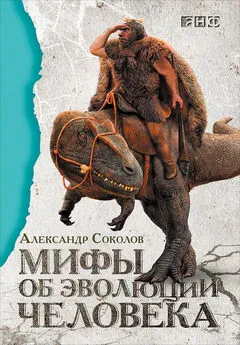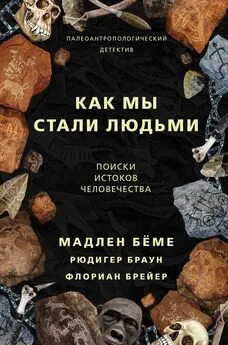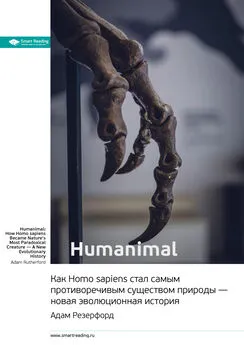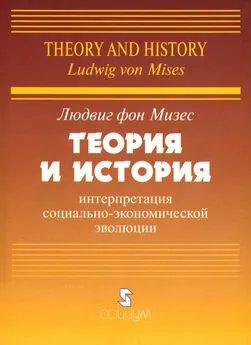Адам Резерфорд - История о нас. Как мы стали людьми? Путеводитель по эволюции человека
- Название:История о нас. Как мы стали людьми? Путеводитель по эволюции человека
- Автор:
- Жанр:
- Издательство:Эксмо
- Год:2022
- Город:Москва
- ISBN:978-5-04-162356-2
- Рейтинг:
- Избранное:Добавить в избранное
-
Отзывы:
-
Ваша оценка:
Адам Резерфорд - История о нас. Как мы стали людьми? Путеводитель по эволюции человека краткое содержание
В формате PDF A4 сохранен издательский макет книги.
История о нас. Как мы стали людьми? Путеводитель по эволюции человека - читать онлайн бесплатно ознакомительный отрывок
Интервал:
Закладка:
Megan Y. Dennis et al., Evolution of human-specific neural SRGAP2 genes by incomplete segmental duplication, Cell 149 (4): 912–22 (11 May 2012).
Dale G. Dunn et al., Evidence for infanticide in bottlenose dolphins of the Western North Atlantic, Journal of Wildlife Diseases 38 (3): 505–10 (July 2002).
Nathan J. Emery, Cognitive ornithology: The evolution of avian intelligence, Philosophical Transactions of the Royal Society B 361 (1465): 23–43 (29 January 2006).
Karin Enstam Jaffe and L. A. Isbell, After the fire: Benefits of reduced ground cover for vervet monkeys ( Cercopithecus aethiops ), American Journal of Primatology 71 (3): 252–60 (March 2009).
Robert Epstein et al., «Self-Awareness» in the pigeon, Science 212 (4495): 695–6 (8 May 1981).
C. Esnault, G. Cornelis, O. Heidmann and T. Heidmann, Differential evolutionary fate of an ancestral primate endogenous retrovirus envelope gene, the EnvV syncytin , captured for a function in placentation, PLoS Genetics 9 (3): e1003400 (28 March 2013).
Ian T. Fiddes et al., Human-specific NOTCH2NL genes affect notch signalling and cortical neurogenesis, Cell 173 (6): 1356–69.e22 (31 May 2018).
Simon E. Fisher and Sonja C. Vernes, Genetics and the language sciences, Annual Review of Linguistics 1: 289–310 (January 2015).
Emma A. Foster et al., Adaptive prolonged postreproductive life span in killer whales, Science 337 (6100): 1313 (14 September 2012).
Masaki Fujita et al., Advanced maritime adaptation in the western Pacific coastal region extends back to 35,000–30,000 years before present, PNAS 113 (40): 11184–89 (October 2016).
Cornelia Geßner et al., Male — female relatedness at specific SNP-linkage groups influences cryptic female choice in Chinook salmon ( Oncorhynchus tshawytscha ), Proceedings of the Royal Society B 284 (1859) (26 July 2017).
J. Goodall, The Chimpanzees of Gombe: Patterns of Behavior, Belknap Press, 1986.
Kirsty E. Graham et al., Bonobo and chimpanzee gestures overlap extensively in meaning, PLoS Biology 16 (2): e2004825 (27 February 2018).
Kristine L. Grayson et al., Behavioral and physiological female responses to male sex ratio bias in a pond-breeding amphibian, Frontiers in Zoology 9 (1): 24 (18 September 2012).
Daniele Guerzoni and Aoife McLysaght, De novo origins of human genes, PLoS Genetics 7 (11): e1002381 (November 2011).
Michael D. Gumert and Suchinda Malaivijitnond, Long-tailed macaques select mass of stone tools according to food type, Philosophical Transactions of the Royal Society B 368 (1630): 20120413 (17 October 2013).
Chang S. Han and Piotr G. Jablonski, Male water striders attract predators to intimidate females into copulation, Nature Communications 1, article number 52 (10 August 2010).
Sonia Harmand et al., 3.3-million-year-old stone tools from Lomekwi 3, West Turkana, Kenya, Nature 521 (7552): 310–15 (20 May 2015).
Heather S. Harris et al., Lesions and behavior associated with forced copulation of juvenile Pacific harbor seals ( Phoca vitulina richardsi ) by southern sea otters ( Enhydra lutris nereis ), Aquatic Mammals 36 (4): 331–41 (29 November 2010).
B. J. Hart et al., Cognitive behaviour in Asian elephants: Use and modification of branches for fly switching, Animal Behaviour 62 (5): 839–47 (November 2001).
Joseph Henrich, Demography and cultural evolution: How adaptive cultural processes can produce maladaptive losses: the Tasmanian case, American Antiquity 69 (2): 197–214 (April 2004).
C. S. Henshilwood et al., Emergence of modern human behavior: Middle Stone Age engravings from South Africa, Science 295 (5558): 1278–80 (15 February 2002).
Christopher Henshilwood et al., Middle Stone Age shell beads from South Africa, Science 304 (5669): 404 (16 April 2004).
Thomas Higham et al., Testing models for the beginnings of the Aurignacian and the advent of figurative art and music: The radiocarbon chronology of Geißenklösterle, Journal of Human Evolution 62 (6): 664–76 (June 2012).
Catherine Hobaiter and Richard W. Byrne, Able-bodied wild chimpanzees imitate a motor procedure used by a disabled individual to overcome handicap, PLoS ONE 5 (8): e11959 (5 August 2010).
D. L. Hoffmann et al., U-Th dating of carbonate crusts reveals Neandertal origin of Iberian cave art, Science 359 (6378): 912–15 (23 February 2018).
S. Ishiyama and M. Brecht, Neural correlates of ticklishness in the rat somatosensory cortex, Science 354 (6313): 757–60 (11 November 2016).
Josephine C. A. Joordens, Homo erectus at Trinil on Java used shells for tool production and engraving, Nature 518: 228–31 (12 February 2015).
Hákon Jónsson et al., Speciation with gene flow in equids despite extensive chromosomal plasticity’, PNAS 111 (52): 18655–60 (30 December 2014).
Juliane Kaminski et al., Human attention affects facial expressions in domestic dogs, Scientific Reports 7: 12914 (19 October 2017).
Dean G. Kilpatrick et al., Drug-facilitated, Incapacitated, and Forcible Rape: A National Study, National Crime Victims Research & Treatment Center report for the US Department of Justice (2007).
Michael Krützen et al., Contrasting relatedness patterns in bottlenose dolphins ( Tursiops sp. ) with different alliance strategies, Proceedings of the Royal Society B 270 (1514) (7 March 2003).
Michael Krützen et al., Cultural transmission of tool use in bottlenose dolphins, PNAS 102 (25): 8939–43 (21 June 2005).
M. Mirazón Lahr et al., Inter-group violence among early Holocene hunter-gatherers of West Turkana, Kenya, Nature 529: 394–8 (21 January 2016).
Greger Larson et al., Worldwide phylogeography of wild boar reveals multiple centers of pig domestication, Science 307 (5715): 1618–21 (11 March 2005).
David J. Linden, The Compass of Pleasure: How Our Brains Make Fatty Foods, Orgasm, Exercise, Marijuana, Generosity, Vodka, Learning, and Gambling Feel So Good, Penguin, 2011.
Mark Lipson et al., Population turnover in remote Oceania shortly after initial settlement, Current Biology 28 (7): 1157–65 (7 April 2018).
C. W. Marean et al., Early human use of marine resources and pigment in South Africa during the Middle Pleistocene, Nature 449: 905–8 (18 October 2007).
S. McBrearty and A. S. Brooks, The revolution that wasn’t: A new interpretation of the origin of modern human behavior, Journal of Human Evolution 39 (5): 453–63 (November 2000).
Aoife McLysaght and Laurence D. Hurst, Open questions in the study of de novo genes: What, how and why, Nature Reviews Genetics , 17: 567–78 (25 July 2016).
John C. Mitani et al., Lethal intergroup aggression leads to territorial expansion in wild chimpanzees, Current Biology 20 (12): R507–R508 (22 June 2010).
Smita Nair et al., Vocalizations of wild Asian elephants ( Elephas maximus ): Structural classification and social context, Journal of the Acoustical Society of America 126 (5): 2768 (November 2009).
James Neill, The Origins and Role of Same-Sex Relations in Human Societies, McFarland & Co., 2011.
Hitonaru Nishie and Michio Nakamura, A newborn infant chimpanzee snatched and cannibalized immediately after birth: Implications for «maternity leave» in wild chimpanzee, American Journal of Physical Anthropology 165: 194–9 (January 2018).
Sue O’Connor et al., Fishing in life and death: Pleistocene fish-hooks from a burial context on Alor Island, Indonesia, Antiquity 91 (360): 1451–68 (6 December 2017).
H. Freyja Ólafsdóttir et al., Hippocampal place cells construct reward related sequences through unexplored space, Elife 4: e06063 (26 June 2015).
Seweryn Olkowicz et al., Birds have primate-like numbers of neurons in the forebrain, PNAS 113 (26): 7255–60 (28 June 2016).
C. Organ et al., Phylogenetic rate shifts in feeding time during the evolution of Homo, PNAS 108 (35): 14555–9 (30 August 2011).
A. Powell, S. Shennan and M. G. Thomas, Late Pleistocene demography and the appearance of modern human behavior, Science 324 (5932): 1298–1301 (5 June 2009).
Shyam Prabhakar, Accelerated evolution of conserved noncoding sequences in humans, Science 314 (5800): 786 (3 November 2006).
Shyam Prabhakar et al., Human-specific gain of function in a developmental enhancer, Science 321 (5894): 1346–50 (5 September 2008).
D. M. Pratt and V. H. Anderson, Population, distribution and behavior of giraffe in the Arusha National Park, Tanzania, Journal of Natural History 16 (4): 481–9 (1982).
D. M. Pratt and V. H. Anderson, Giraffe social behavior, Journal of Natural History 19 (4): 771–81 (1985).
Helmut Prior et al., Mirror-induced behavior in the magpie ( Pica pica ): Evidence of self-recognition, PLoS Biology 6 (8): e202 (19 August 2008).
Jill D. Pruetz et al., Savanna chimpanzees, Pan troglodytes verus , hunt with tools, Current Biology 17 (5): 412–17 (6 March 2007).
Jill D. Pruetz and Nicole M. Herzog, Savanna chimpanzees at Fongoli, Senegal, navigate a fire landscape, Current Anthropology 58 (S16): S337–S350 (August 2017).
Jill D. Pruetz and Thomas C. LaDuke, Reaction to fire by savanna chimpanzees ( Pan troglodytes verus ) at Fongoli, Senegal: Conceptualization of «fire behavior» and the case for a chimpanzee model, American Journal of Physical Anthropology 141 (14): 646–50 (April 2010).
Kay Prüfer et al., The bonobo genome compared with the chimpanzee and human genomes, Nature 486: 527–31 (28 June 2012).
Anita Quiles et al., A high-precision chronological model for the decorated Upper Paleolithic cave of Chauvet-Pont d’Arc, Ardèche, France, PNAS 113 (17): 4670–75 (26 April 2016).
Joaquín Rodríguez-Vidal et al., A rock engraving made by Neanderthals in Gibraltar, PNAS 111 (37): 13301–6 (16 September 2014).
Douglas G. D. Russell et al., Dr. George Murray Levick (1876–1956): Unpublished notes on the sexual habits of the Adélie penguin, Polar Record 48 (4): 387–93 (January 2012).
Anne E. Russon et al., Orangutan fish eating, primate aquatic fauna eating, and their implications for the origins of ancestral hominin fish eating, Journal of Human Evolution 77: 50–63 (December 2014).
Graeme D. Ruxton and Martin Stevens, The evolutionary ecology of decorating behaviour, Biology Letters 11 (6) (3 June 2015).
Angela Saini, Inferior: How Science Got Women Wrong, Fourth Estate, 2017.
Ivan Sazima, Corpse bride irresistible: A dead female tegu lizard ( Salvator merianae ) courted by males for two days at an urban park in south-eastern Brazil, Herpetology Notes 8: 15–18 (25 January 2015).
Y. Schnytzer et al., Boxer crabs induce asexual reproduction of their associated sea anemones by splitting and intraspecific theft, PeerJ 5: e2954 (31 January 2017).
Helmut Schmitz and Herbert Bousack, Modelling a historic oil-tank fire allows an estimation of the sensitivity of the infrared receptors in pyrophilous Melanophila beetles, PLoS ONE 7 (5): e37627 (21 May 2012).
Erin M. Scott et al., Aggression in bottlenose dolphins: Evidence for sexual coercion, male — male competition, and female tolerance through analysis of tooth-rake marks and behaviour, Behaviour 142 (1): 21–44 (January 2005).
Читать дальшеИнтервал:
Закладка:










